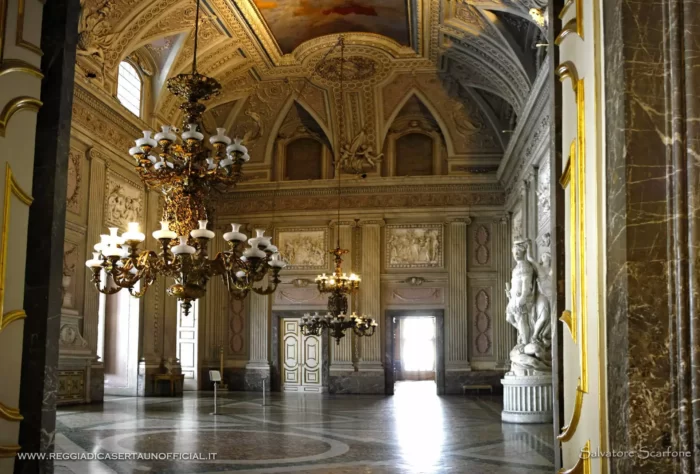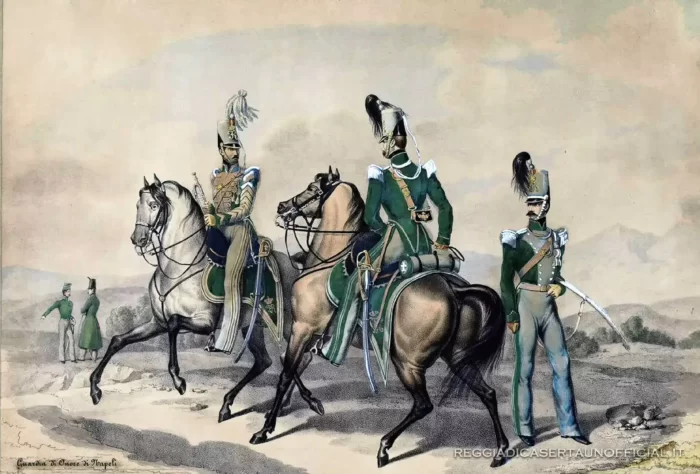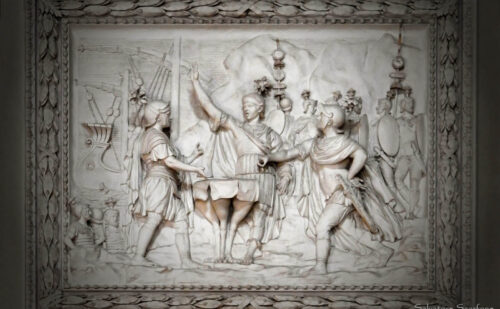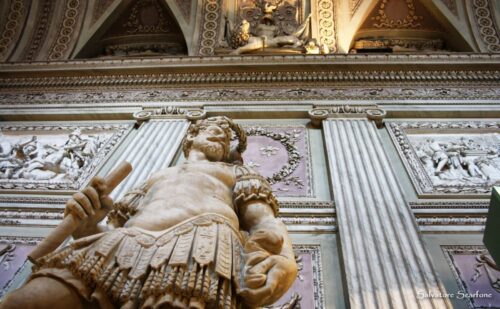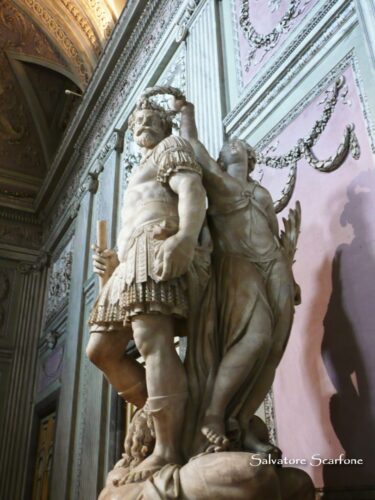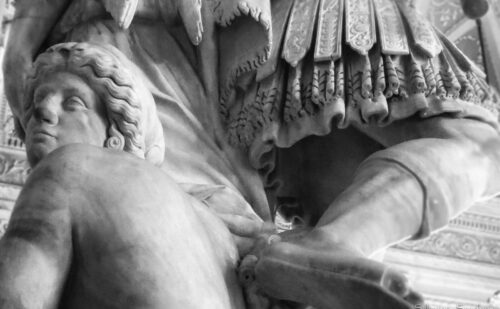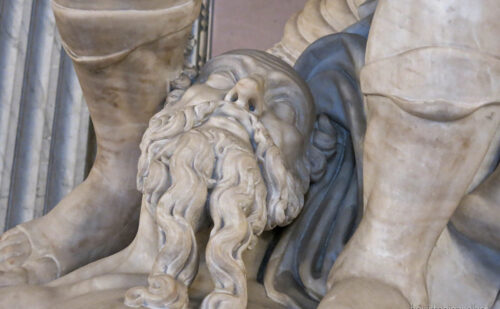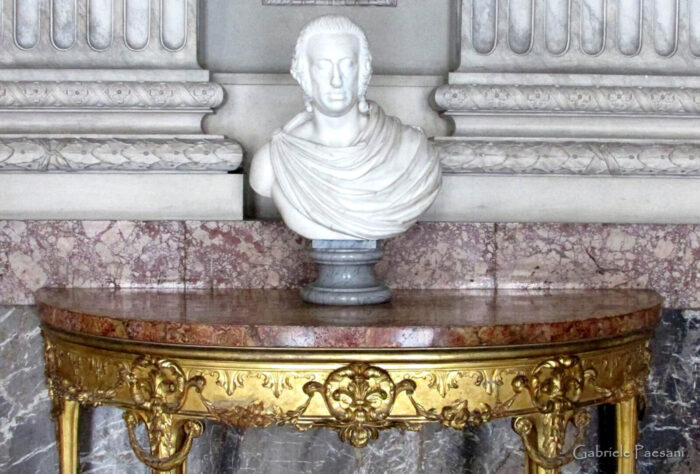Hall of the Bodyguards
One of the rooms that inspired the birth of Neoclassicism
Description
The Hall of Bodyguards is much richer in stucco than the previous one. Vanvitelli already indicated it as:
“Room for the Bodyguards, room for the Essene, for the Brigadier, path, and more”
In the 1799 inventories it is indicated as the “Royal Palatine Bodyguards Room” and also provides sleeping quarters for the brigadier, the sub-brigadier and the 14 royal guards, chosen from among the noble families who competed for this unprofitable honour, given that it required them to personally provide for uniform and the maintenance of one’s horse. It is probable that the adjoining rooms were also used for the same purpose.
Auth. Maria Carmela Masi
The walls
The second antechamber, of the Bodyguards, is much richer in stucco. A cornice supported by Ionic order pilasters runs around the walls.
In 1787, Lucio Lucchesi and Carlo Beccali completed the stucco work in the second antechamber. The twelve high-relief panels depict episodes from the Punic Wars, created by Gaetano Salomone, Tommaso Succiano and Paolo Persico in 1789.
The sculpture of Alessandro Farnese
In the Hall of the Bodyguards, next to the right wall, in front of the large window, you can see the marble group of Alessandro Farnese with the Victory crowning it behind him and at his feet the allegorical figures of Flanders (the kneeling figure) and the River Scheldt ( bearded figure).
The statue was created by the sculptor Simone Moschino between 1594 and 1598 on behalf of Cardinal Odoardo Farnese, who towards the end of the sixteenth century, after his transfer to Rome, was awaiting the completion of the decoration of the family palace in Rome (Martucci attributed it to the Bernini’s school).
From the inventory of the Farnese Palace, compiled in 1653, it is clear that at that date the statue was located in the center of the “Great Hall”. It was then transferred to Caserta at the time of the arrival of the Farnese Collections in the Kingdom of the Two Sicilies and since the first Inventory (from the end of the eighteenth century), it has been placed in the Room.
Furnishings
A series of four consoles, in Louis XVI style, in carved and gilded wood with an alabaster top currently furnish the great Salon. Alternating with the consoles are twenty-one stools in the French Empire style of the early nineteenth century, which were brought to Caserta during the decade of French occupation (1805-1815) by Murat himself, coming from the “Tuileries”.
On the consoles there are four white marble busts of:
- King Ferdinand IV (husband of Maria Carolina of Austria);
- King Francis I (husband of Maria Isabella of Spain);
- King Ferdinand II (husband of Maria Cristina of Savoy, who died in childbirth, and of Maria Teresa Isabella of Austria);
- King Francis II (husband of Maria Sofia of Bavaria);
The white marble fireplace is the work of Carlo Beccalli (c. 1787), who created many of the stuccoes in the rooms.
External links


